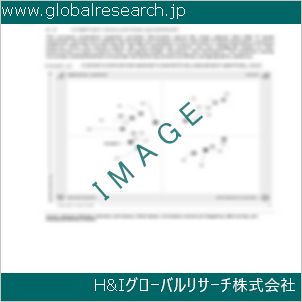1. Preface
1.1. Market Definition and Scope
1.2. Market Segmentation
1.3. Key Research Objectives
1.4. Research Highlights
2. Assumptions
3. Research Methodology
4. Executive Summary
5. Market Overview
5.1. Market Dynamics
5.1.1. Drivers
5.1.2. Restraints
5.1.3. Opportunities
5.2. Key Trends Analysis
5.2.1. Demand Side Analysis
5.2.2. Supply Side Analysis
5.3. Key Market Indicators
5.3.1. Overall Material Handling Equipment Market Overview
5.4. Porter’s Five Forces Analysis
5.5. Industry SWOT Analysis
5.6. Value Chain Analysis
5.7. Covid-19 Impact Analysis
5.8. Technological Overview
5.9. Spare Parts Business Analysis
5.9.1. Lifecycle & Maintenance
5.9.2. Average Spare Parts Business (US$) Per Year by
5.9.2.1. Reach Stackers
5.9.2.2. Container Handlers
5.9.2.3. Empty Container Handlers
5.9.2.4. Terminal Tractors
5.10. Global Port Equipment Market Analysis and Forecast, 2017 – 2031
5.10.1. Market Value Projections (US$ Mn)
5.10.2. Market Volume Projections (Thousand Units)
6. Global Port Equipment Market Analysis and Forecast, By Equipment Type
6.1. Port Equipment Market Size (US$ Mn and Thousand Units), By Equipment Type, 2017 – 2031
6.1.1. Heavy Forklifts
6.1.1.1. Electric Operated
6.1.1.2. Fuel Operated
6.1.2. Reach Stackers
6.1.2.1. Electric Operated
6.1.2.2. Fuel Operated
6.1.3. Container Handlers
6.1.3.1. Electric Operated
6.1.3.2. Fuel Operated
6.1.4. Terminal Tractors
6.1.4.1. Electric Operated
6.1.4.2. Fuel Operated
6.1.5. Container Spreaders
6.1.5.1. Manual
6.1.5.2. Semi-automatic
6.1.5.3. Automatic
6.1.6. Others
6.2. Incremental Opportunity, By Equipment Type
7. Global Port Equipment Market Analysis and Forecast, By Lifting Capacity
7.1. Port Equipment Market Size (US$ Mn and Thousand Units), By Lifting Capacity, 2017 – 2031
7.1.1. Up to 10 Tons
7.1.2. 10 to 30 Tons
7.1.3. 30 to 50 Tons
7.1.4. Above 50 Tons
7.2. Incremental Opportunity, By Lifting Capacity
8. Global Port Equipment Market Analysis and Forecast, By End-use
8.1. Port Equipment Market Size (US$ Mn and Thousand Units), By End-use, 2017 – 2031
8.1.1. Shipping Ports
8.1.2. Industrial
8.1.3. Railyards
8.2. Incremental Opportunity, By End-use
9. Global Port Equipment Market Analysis and Forecast, By Distribution Channel
9.1. Port Equipment Market Size (US$ Mn and Thousand Units), By Distribution Channel, 2017 – 2031
9.1.1. Direct Sales
9.1.2. Indirect Sales
9.2. Incremental Opportunity, By Distribution Channel
10. Global Port Equipment Market Analysis and Forecast, By Region
10.1. Port Equipment Market Size (US$ Mn and Thousand Units), By Region, 2017 – 2031
10.1.1. North America
10.1.2. Europe
10.1.3. Asia Pacific
10.1.4. Middle East & Africa
10.1.5. South America
10.2. Incremental Opportunity, By Region
11. North America Port Equipment Market Analysis and Forecast
11.1. Regional Snapshot
11.2. Key Supplier Analysis
11.3. Price Trend Analysis
11.3.1. Weighted Average Price
11.4. Key Trends Analysis
11.4.1. Demand Side Analysis
11.4.2. Supply Side Analysis
11.5. Port Equipment Market Size (US$ Mn and Thousand Units), By Equipment Type, 2017 – 2031
11.5.1. Heavy Forklifts
11.5.1.1. Electric Operated
11.5.1.2. Fuel Operated
11.5.2. Reach Stackers
11.5.2.1. Electric Operated
11.5.2.2. Fuel Operated
11.5.3. Container Handlers
11.5.3.1. Electric Operated
11.5.3.2. Fuel Operated
11.5.4. Terminal Tractors
11.5.4.1. Electric Operated
11.5.4.2. Fuel Operated
11.5.5. Container Spreaders
11.5.5.1. Manual
11.5.5.2. Semi-automatic
11.5.5.3. Automatic
11.5.6. Others
11.6. Port Equipment Market Size (US$ Mn and Thousand Units), By Lifting Capacity, 2017 – 2031
11.6.1. Up to 10 Tons
11.6.2. 10 to 30 Tons
11.6.3. 30 to 50 Tons
11.6.4. Above 50 Tons
11.7. Port Equipment Market Size (US$ Mn and Thousand Units), By End-use, 2017 – 2031
11.7.1. Shipping Ports
11.7.2. Industrial
11.7.3. Railyards
11.8. Port Equipment Market Size (US$ Mn and Thousand Units), By Distribution Channel, 2017 – 2031
11.8.1. Direct Sales
11.8.2. Indirect Sales
11.9. Port Equipment Market Size (US$ Mn) (Thousand Units), By Country, 2017 – 2031
11.9.1. The U.S.
11.9.2. Canada
11.9.3. Rest of North America
11.10. Incremental Opportunity Analysis
12. Europe Port Equipment Market Analysis and Forecast
12.1. Regional Snapshot
12.2. Key Supplier Analysis
12.3. Price Trend Analysis
12.3.1. Weighted Average Price
12.4. Key Trends Analysis
12.4.1. Demand Side Analysis
12.4.2. Supply Side Analysis
12.5. Port Equipment Market Size (US$ Mn and Thousand Units), By Equipment Type, 2017 – 2031
12.5.1. Heavy Forklifts
12.5.1.1. Electric Operated
12.5.1.2. Fuel Operated
12.5.2. Reach Stackers
12.5.2.1. Electric Operated
12.5.2.2. Fuel Operated
12.5.3. Container Handlers
12.5.3.1. Electric Operated
12.5.3.2. Fuel Operated
12.5.4. Terminal Tractors
12.5.4.1. Electric Operated
12.5.4.2. Fuel Operated
12.5.5. Container Spreaders
12.5.5.1. Manual
12.5.5.2. Semi-automatic
12.5.5.3. Automatic
12.5.6. Others
12.6. Port Equipment Market Size (US$ Mn and Thousand Units), By Lifting Capacity, 2017 – 2031
12.6.1. Up to 10 Tons
12.6.2. 10 to 30 Tons
12.6.3. 30 to 50 Tons
12.6.4. Above 50 Tons
12.7. Port Equipment Market Size (US$ Mn and Thousand Units), By End-use, 2017 – 2031
12.7.1. Shipping Ports
12.7.2. Industrial
12.7.3. Railyards
12.8. Port Equipment Market Size (US$ Mn and Thousand Units), By Distribution Channel, 2017 – 2031
12.8.1. Direct Sales
12.8.2. Indirect Sales
12.9. Port Equipment Market Size (US$ Mn) (Thousand Units), By Country, 2017 – 2031
12.9.1. U.K.
12.9.2. Germany
12.9.3. France
12.9.4. Rest of Europe
12.10. Incremental Opportunity Analysis
13. Asia Pacific Port Equipment Market Analysis and Forecast
13.1. Regional Snapshot
13.2. Key Supplier Analysis
13.3. Price Trend Analysis
13.3.1. Weighted Average Price
13.4. Key Trends Analysis
13.4.1. Demand Side Analysis
13.4.2. Supply Side Analysis
13.5. Port Equipment Market Size (US$ Mn and Thousand Units), By Equipment Type, 2017 – 2031
13.5.1. Heavy Forklifts
13.5.1.1. Electric Operated
13.5.1.2. Fuel Operated
13.5.2. Reach Stackers
13.5.2.1. Electric Operated
13.5.2.2. Fuel Operated
13.5.3. Container Handlers
13.5.3.1. Electric Operated
13.5.3.2. Fuel Operated
13.5.4. Terminal Tractors
13.5.4.1. Electric Operated
13.5.4.2. Fuel Operated
13.5.5. Container Spreaders
13.5.5.1. Manual
13.5.5.2. Semi-automatic
13.5.5.3. Automatic
13.5.6. Others
13.6. Port Equipment Market Size (US$ Mn and Thousand Units), By Lifting Capacity, 2017 – 2031
13.6.1. Up to 10 Tons
13.6.2. 10 to 30 Tons
13.6.3. 30 to 50 Tons
13.6.4. Above 50 Tons
13.7. Port Equipment Market Size (US$ Mn and Thousand Units), By End-use, 2017 – 2031
13.7.1. Shipping Ports
13.7.2. Industrial
13.7.3. Railyards
13.8. Port Equipment Market Size (US$ Mn and Thousand Units), By Distribution Channel, 2017 – 2031
13.8.1. Direct Sales
13.8.2. Indirect Sales
13.9. Port Equipment Market Size (US$ Mn) (Thousand Units), By Country, 2017 – 2031
13.9.1. China
13.9.2. India
13.9.3. Japan
13.9.4. Rest of Asia Pacific
13.10. Incremental Opportunity Analysis
14. Middle East & Africa Port Equipment Market Analysis and Forecast
14.1. Regional Snapshot
14.2. Key Supplier Analysis
14.3. Price Trend Analysis
14.3.1. Weighted Average Price
14.4. Key Trends Analysis
14.4.1. Demand Side Analysis
14.4.2. Supply Side Analysis
14.5. Port Equipment Market Size (US$ Mn and Thousand Units), By Equipment Type, 2017 – 2031
14.5.1. Heavy Forklifts
14.5.1.1. Electric Operated
14.5.1.2. Fuel Operated
14.5.2. Reach Stackers
14.5.2.1. Electric Operated
14.5.2.2. Fuel Operated
14.5.3. Container Handlers
14.5.3.1. Electric Operated
14.5.3.2. Fuel Operated
14.5.4. Terminal Tractors
14.5.4.1. Electric Operated
14.5.4.2. Fuel Operated
14.5.5. Container Spreaders
14.5.5.1. Manual
14.5.5.2. Semi-automatic
14.5.5.3. Automatic
14.5.6. Others
14.6. Port Equipment Market Size (US$ Mn and Thousand Units), By Lifting Capacity, 2017 – 2031
14.6.1. Up to 10 Tons
14.6.2. 10 to 30 Tons
14.6.3. 30 to 50 Tons
14.6.4. Above 50 Tons
14.7. Port Equipment Market Size (US$ Mn and Thousand Units), By End-use, 2017 – 2031
14.7.1. Shipping Ports
14.7.2. Industrial
14.7.3. Railyards
14.8. Port Equipment Market Size (US$ Mn and Thousand Units), By Distribution Channel, 2017 – 2031
14.8.1. Direct Sales
14.8.2. Indirect Sales
14.9. Port Equipment Market Size (US$ Mn) (Thousand Units), By Country, 2017 – 2031
14.9.1. GCC
14.9.2. South Africa
14.9.3. Rest of Middle East & Africa
14.10. Incremental Opportunity Analysis
15. South America Port Equipment Market Analysis and Forecast
15.1. Regional Snapshot
15.2. Key Supplier Analysis
15.3. Price Trend Analysis
15.3.1. Weighted Average Price
15.4. Key Trends Analysis
15.4.1. Demand Side Analysis
15.4.2. Supply Side Analysis
15.5. Port Equipment Market Size (US$ Mn and Thousand Units), By Equipment Type, 2017 – 2031
15.5.1. Heavy Forklifts
15.5.1.1. Electric Operated
15.5.1.2. Fuel Operated
15.5.2. Reach Stackers
15.5.2.1. Electric Operated
15.5.2.2. Fuel Operated
15.5.3. Container Handlers
15.5.3.1. Electric Operated
15.5.3.2. Fuel Operated
15.5.4. Terminal Tractors
15.5.4.1. Electric Operated
15.5.4.2. Fuel Operated
15.5.5. Container Spreaders
15.5.5.1. Manual
15.5.5.2. Semi-automatic
15.5.5.3. Automatic
15.5.6. Others
15.6. Port Equipment Market Size (US$ Mn and Thousand Units), By Lifting Capacity, 2017 – 2031
15.6.1. Up to 10 Tons
15.6.2. 10 to 30 Tons
15.6.3. 30 to 50 Tons
15.6.4. Above 50 Tons
15.7. Port Equipment Market Size (US$ Mn and Thousand Units), By End-use, 2017 – 2031
15.7.1. Shipping Ports
15.7.2. Industrial
15.7.3. Railyards
15.8. Port Equipment Market Size (US$ Mn and Thousand Units), By Distribution Channel, 2017 – 2031
15.8.1. Direct Sales
15.8.2. Indirect Sales
15.9. Port Equipment Market Size (US$ Mn) (Thousand Units), By Country, 2017 – 2031
15.9.1. Brazil
15.9.2. Rest of South America
15.10. Incremental Opportunity Analysis
16. Competition Landscape
16.1. Market Player – Competition Dashboard
16.2. Market Share Analysis % (2021)
16.3. Company Profiles (Details – Company Overview, Sales Area/Geographical Presence, Revenue, Strategy & Business Overview, Go-To-Market Strategy)
16.3.1. BYD Motors Inc.
16.3.1.1. Company Overview
16.3.1.2. Sales Area/Geographical Presence
16.3.1.3. Revenue
16.3.1.4. Strategy & Business Overview
16.3.1.5. Go-To-Market Strategy
16.3.2. Cargotec Corporation
16.3.2.1. Company Overview
16.3.2.2. Sales Area/Geographical Presence
16.3.2.3. Revenue
16.3.2.4. Strategy & Business Overview
16.3.2.5. Go-To-Market Strategy
16.3.3. Gaussin
16.3.3.1. Company Overview
16.3.3.2. Sales Area/Geographical Presence
16.3.3.3. Revenue
16.3.3.4. Strategy & Business Overview
16.3.3.5. Go-To-Market Strategy
16.3.4. Greenfield Products, LLC.
16.3.4.1. Company Overview
16.3.4.2. Sales Area/Geographical Presence
16.3.4.3. Revenue
16.3.4.4. Strategy & Business Overview
16.3.4.5. Go-To-Market Strategy
16.3.5. Hyster-Yale Group, Inc.
16.3.5.1. Company Overview
16.3.5.2. Sales Area/Geographical Presence
16.3.5.3. Revenue
16.3.5.4. Strategy & Business Overview
16.3.5.5. Go-To-Market Strategy
16.3.6. Konecranes
16.3.6.1. Company Overview
16.3.6.2. Sales Area/Geographical Presence
16.3.6.3. Revenue
16.3.6.4. Strategy & Business Overview
16.3.6.5. Go-To-Market Strategy
16.3.7. Liebherr
16.3.7.1. Company Overview
16.3.7.2. Sales Area/Geographical Presence
16.3.7.3. Revenue
16.3.7.4. Strategy & Business Overview
16.3.7.5. Go-To-Market Strategy
16.3.8. TEC Container
16.3.8.1. Company Overview
16.3.8.2. Sales Area/Geographical Presence
16.3.8.3. Revenue
16.3.8.4. Strategy & Business Overview
16.3.8.5. Go-To-Market Strategy
16.3.9. Terberg Special Vehicles
16.3.9.1. Company Overview
16.3.9.2. Sales Area/Geographical Presence
16.3.9.3. Revenue
16.3.9.4. Strategy & Business Overview
16.3.9.5. Go-To-Market Strategy
16.3.10. Toyota Material Handling
16.3.10.1. Company Overview
16.3.10.2. Sales Area/Geographical Presence
16.3.10.3. Revenue
16.3.10.4. Strategy & Business Overview
16.3.10.5. Go-To-Market Strategy
17. Key Takeaways
17.1. Identification of Potential Market Spaces
17.1.1. Equipment Type
17.1.2. Lifting Capacity
17.1.3. End-use
17.1.4. Distribution Channel
17.1.5. Region
17.2. Preferred Sales & Marketing Strategy
17.3. Prevailing Market Risks
❖ 免責事項 ❖
http://www.globalresearch.jp/disclaimer












